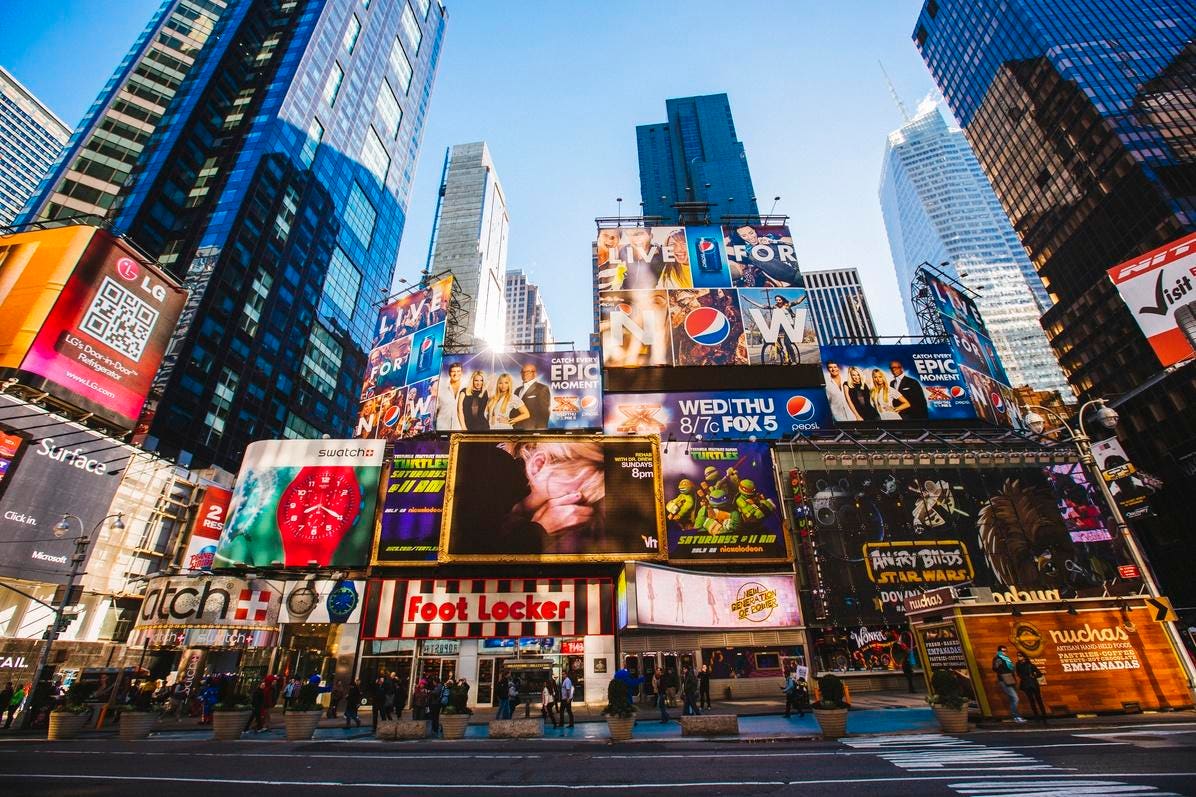The Kantar BrandZ world’s most valuable brands report is out, and it’s sobering. The world’s top 100 most valuable global brands lost 20% of their value in 2023, and across the 13 vertical categories tracked, every one experienced a decline.
For example, media and entertainment brands were the biggest losers, dropping 32%, followed by retail brands, down 32% and apparel brands losing 21% of combined value. Personal care brands also took a drubbing, down 15%, while luxury brands held on to most of the value accumulated since the pandemic, dropping only 4%.
However, this year’s decline must be taken in context. Over the past two years, the combined brand value of the top 100 shot through the roof, rising 42% in 2021 and 23% in 2022, marking the two largest yearly increases since 1998 when Kantar launched the report.
Then, in 2023, brand values fell back to earth, which was another trend-setting year but in the other direction, dropping from $8.7 trillion last year to $6.9 trillion this.
In other words, brand values have been on a roller coaster since the pandemic. “It’s a sign of the times,” related Derrick Daye, managing partner at the brand consultancy The Blake Project.
“In the simplest terms, brands help people make choices. If you have a strong brand, there’s a better chance of people making your brand their choice, even when they are facing economic pressure. Strong brands bring something special to the table, which is most precious in uncertain times, and that is trust,” he continued.
Yet this year’s decline could indicate that big brands’ dominance in the marketplace is on the wane, and consumers want new choices. This could give smaller, disrupter brands an opportunity to rise from their ashes.
Brand Equity Eroding
Kantar’s methodology factors the financial ups and downs of a brand, which have been volatile of late, and overlays it with the consumers’ perspective based on surveys conducted among more than 170,000 consumers.
The result is a brand equity value that reflects: “A holistic portrait of brand equity: one that incorporates how the market values a company’s brand assets – and how ordinary people do too.”
Trust undergirds a brand’s equity value. If consumers lose trust in a brand, they are less likely to buy it, and the brand’s financials will tank. While one must be cautious about drawing conclusions from a couple years of data compiled in times of extraordinary upheaval, this year’s steep decline in brand equity signals a trend worth noting, especially considering that people’s trust in big business is at an all-time low, according to the Gallup Poll.
Americans who express a great deal or quite a lot of trust in big business dropped to 14% in 2023; only television news (11%) and Congress (7%) scored lower. It dropped from 23% in 2019 before the pandemic, and from 1973 when Gallup began its survey through 2019, it averaged 24%. The only other time people’s confidence in big business was so low was in 2009 when it reached 16%, and we all know what happened at that time: the Great Recession.
One can conclude that big brands owned by big businesses are on shaky ground. Consumers are losing trust that they will do the right thing and deliver a meaningful difference in consumers’ lives, giving emerging brands a unique opportunity to grow.
“If you look at the brands that have moved up and moved down, there is a trust driver at play. Brands have to create a relevant, meaningful difference,” Daye said and added, “Smaller brands, even local brands that are closer to their customers, could be impacting these bigger brands. People are open to trying new things given the pressures they are under.”
And the fact that Gallup finds small businesses are the most trusted institution in the country, trusted by 65% of Americans, puts wind in the sails of smaller brands that can capitalize on the shaky ground that many big brands find themselves on.
Top 100 Global Brands
To reach top 100 status in 2023, a brand has to have a total brand equity value of $17.6 billion. That’s where Pampers entered the list at number 100.
Topping the list is Apple at $880.5 billion, followed by Google ($577.7 billion), Microsoft ($502 billion), Amazon ($469 billion) and McDonalds ($191 billion). However, all top five dropped in value. McDonald’s was off only 3% and Apple down 7%, while Google and Amazon fell the hardest, down 30% and 34% respectively. Microsoft was in the middle, down 18%.
Within each of the major categories Kantar reports, it goes deeper than just the top 100 brands. Here’s a play-by-play of the key retail categories, and apologies in advance for all the numbers included:
Retail’s Top 20 Off Sharply
Amazon runs away with the retail lead based on its $175 billion brand equity attributed to its retail arm. However, it lost 38% of its value from 2022. Number two, Home Depot came in at $75 billion, only dropping 11% in brand equity, and it put more distance between itself and close competitor Lowe’s, which declined 12% in brand equity to $21.5 billion.
Walmart captured the number three slot at $60 billion after losing only 3% of its equity and it also gained ground against Target, which dropped 37% to $15 billion. Target also lost its coveted top 100 global brand slot this year.
Other big losers in retail were China-based Taoboa, down 51%; TMall, down 48%; JD dropped 37%; and Pinduoduo down 15%. Argentinian Mercado Libre declined 32%. Online marketplace EBay also dropped 33%. Singapore-based Shoppe, which ranked among the top 20 retailers last year, dropped off the list this year, as did the South Korean retailer Coupang.
Gaining traction this year in retail was Costco with its brand equity rising 8% to $53.4 billion. That boost helped it advance 15 slots in the global 100 to number 33. Also on the rise was Dollar General, up 4% to $13.4 billion. New entrants on the top 20 retailer list were 7-Eleven ($10.6 billion), Sam’s Club ($9.9 billion) and TJ Maxx ($9.4 billion).
In grocery retail, Aldi maintained its lead against Lidl, $21 billion to $11.7 billion respectively. U.K.-based Woolworths dropped 9% to $11 billion. And Whole Foods, which made the top 20 retailer cut last year, fell off this.
The general trend in retail points to a movement toward more value-based retailers, given consumers’ economic uncertainty. Ikea, which owns the value-space in home, advanced five slots in the top global 100, reaching number 86 with $21 billion in brand equity.
The move toward more value retail contrasts sharply with the luxury category which only declined 4% overall in brand equity.
Luxury Brands Hold Equity Value
The world’s top ten luxury brands mostly held onto the dramatic 45% equity gain experienced from 2021 to 2022. Total brand value reached $344.4 billion in 2022 and only took a small step back in 2023 to $329.5 billion.
The biggest loser in the luxury segment was Gucci, which saw its brand equity plummet 31%, from $38 billion in 2022 to $26.3 billion in 2023. This is a brand that owner Kering is working overtime to fix, with a new managing director and creative director now in place. Kering reported third-quarter results today and a quick read shows Gucci reported revenues were off 14%. Note: I’ll be following with an in-depth look at Kering shortly.
Category leader Louis Vuitton’s brand equity is unchanged at $124.8 billion, which is quite an accomplishment since its value grew 64% last year. Hermès dropped a tad, from $80 billion last year to $76.3 this, but it also gained mightly last year, up 73%. Cartier was able to hold onto much of its dramatic 88% boost in 2022, only dropping from $10 billion last year to $9.7 billion this.
Chanel kept up the pressure, growing its brand equity by 6% this year to reach $56 billion. LVMH’s Dior also advanced 9% to $11.4 billion. After that, other luxury brands declined, Rolex (-13%), Saint-Laurent/YSL (-11%), Prada (-13%) and Tiffany (-9%).
Overall, luxury brands, other than Gucci, only experienced a modest downward shift and have largely retained the dramatic value gains since the pandemic.
Top Ten Apparel Brands Tanked
While fashion luxury brands largely held onto the bounce they received post-pandemic, lower-tier fashion brands did not. The top ten global apparel brands dropped 21% to $171.7 billion after rising 20% from 2021 to 2022 to $216.6 billion. Every brand that was in the top ten list last year declined in value.
And the drop in the top ten apparel category would have been far steeper if Shien hadn’t made its entrance onto the top 100 global list at number 70 with a value of $24.3 billion. It also bumped Under Armour off the top ten fashion brand list and replaced Zara in the number two slot in fashion.
Nike held on to its number one position in apparel, but it dropped 32% in value, from $109.6 billion last year to $74.9 billion this. Competitors Adidas and Puma also faltered, with Adidas dropping 50% to $11.9 billion and Puma off 42% to $3 billion. Chinese-based Anta and Li Ning athletic brands declined less sharply, down 16% to $3.2 billion and -19% to $3 billion, respectively.
Athleisurewear leader Lululemon declined 19% to $16.6 billion. And fast-fashion leader Zara was off 28% to $18.4 billion while H&M was off more, down 39% to $4.4 billion. Uniqlo stumbled too, dropping 15% to $12.1 billion.
Top 15 Personal Care Brands Sputtered
The story in personal care brands was much the same as in fashion. The top 15 personal care brands grew 17% last year, only to drop 15% this year to $175.4 billion from $206.9 billion in 2022. One brand, Bath & Body Works, with $6.4 billion in value last year, fell off the top 15 list, and Olay came on with $4.6 billion in brand equity.
Overall, the premium personal care brands lost more brand equity value than the mass brands, which is interesting considering that luxury fashion brands held on to much of their equity.
Category leader L’Oréal dropped 20% to $38.1 billion and number two Lancôme declined 19% to $19.4 billion. Estée Lauder lost 19% of value coming in at $11.5 billion, and sister Clinique brand dropped 21% to $9 billion. Shishedo in the premium beauty space declined the most, down 38% to $5 billion.
The only personal care brand that gained ground was Colgate, up 1% to $18.4 billion. And other more popularly priced brands lost less than the premium-priced ones. Pantene Pro V was off only 3% to $5 billion; Gillette off 8% to $13.6 billion; Dove down 9% to $6.5 billion; and Nivea lost 10% to $6.1 billion. However, L’Oréal-owned Garnier and Maybelline dropped the most at the popular-priced level, off 18% to $9.6 billion and -11% to $5.3 billion, respectively.
P&G-owned Pampers ($17.4 billion) and Kimberly-Clark-owned Huggies ($6.2 billion) rounded out the personal care top 15 list, and both lost value, with Pampers losing more, -12% and -2%, respectively.
Disrupter Brand Opportunity
Kantar’s analysis emphasizes the resilience of the world’s leading brands even in the face of economic turmoil. “The next few years should not be a period where brands hunker down, suspend their brand building investments or otherwise ‘wait it out’ until sunnier economic forecasts emerge,” it advised. And certainly the big brands have the resources and capital reserves to keep the pressure on.
“It is the large, established brands who are now best positioned to advance the state of play in their respective categories. Over the next several years, these large brands will have the chance to widen their advantages in areas like innovation and sustainable leadership,” the report stated.
At the same time, the declines noted among so many leading brands listed above show cracks in their leadership position that smaller, disrupter brands can leverage, especially if they move forward with a trust advantage that is eroding across big businesses controlling the big brands, particularly in the U.S. Some 55 of the top 100 brands are U.S. based, and they control 75% of the top 100’s total brand value.
While Kantar states that strong brands are “best positioned to convince consumers to embrace new innovation,” the innovation advantage in retail tends to go to the newer, entrepreneurial brands that challenge the big brands’ status quo.
The Kantar report stresses the pricing power that big brands enjoy, but against that is the other side of the value equation: making a meaningful difference in consumers’ lives that can not be easily replaced or substituted.
“We’re in an age of disruption,” observed brand strategist Daye. “You’ve got to keep moving in the direction of creating value. Consumers today have to make very careful decisions about what they think is valuable because they are under economic pressure. Brands need to reinforce what makes them valuable. That’s where the focus must be.”
Just being big isn’t nearly enough. “Value is underpinned by trust, especially in a time of uncertainty like now. The antidote to uncertainly is trust,” he concluded.
Read the full article here





